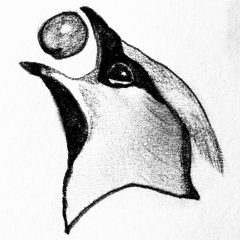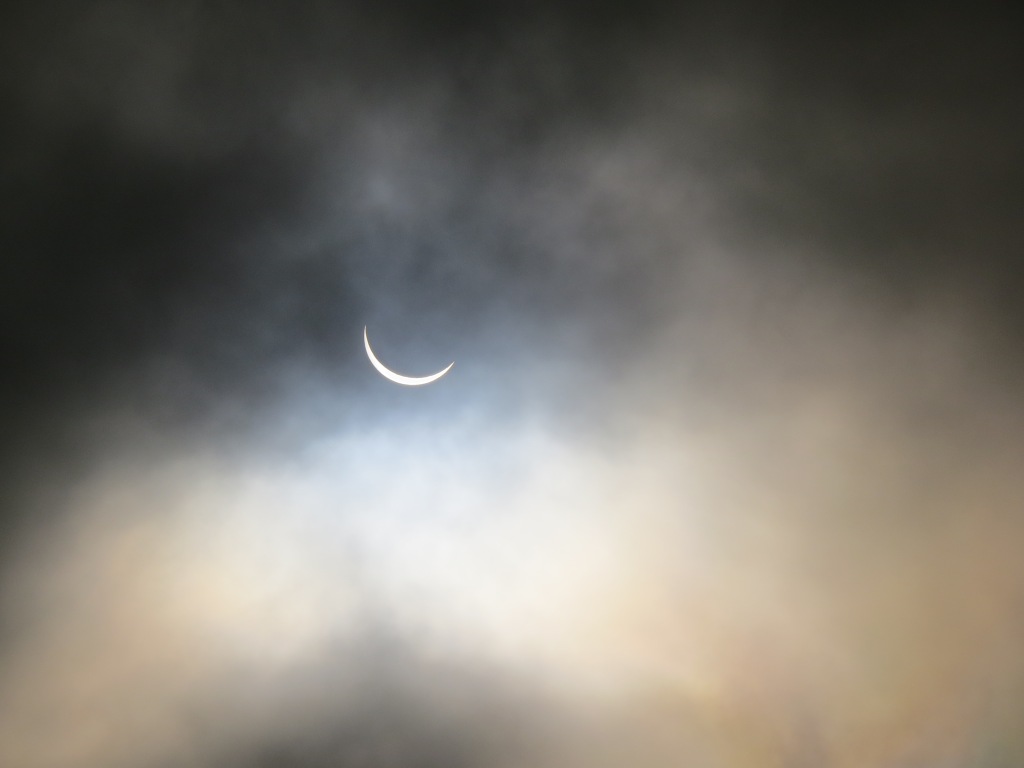Unburdened by the concerns of grown-ups, extreme weather is thrilling when you are young. I was eight when the Big Freeze of 1963 started; and I loved it. The south west of England had the worst snow before New Year. Scotland’s big storm arrived in January after school had restarted. Today we are used to accurate weather forecasts. This was not the case in the sixties. During crucial hay and harvest times my father would phone Prestwick Airport to get a better idea of what was coming our way and adjust his decisions accordingly. Very bad weather often arrived with little or no warning.
On snowy days a message would come round the classrooms instructing any children from farms and other outlying areas to go home early. Our classroom looked south across the main Ayr road towards Shankston Wood; in reality an old pit bing covered in dark leafless trees. As the children from the more remote rural areas trooped off to their buses, we looked out at snow blowing past the black woods like billows of white smoke. Eventually all pupils were released and we set off across the playground in high spirits. Snow was drifting across the ground like sand over a beach. Some daft boys lay down and let it pile up against their backs, giggling.
Our father or mother always collected us from the school gates. We lived about a mile from the town on a farm 600 feet above sea level. In winter the weather up there was significantly colder than it was in town. On this snowy afternoon my father came for us early and we set off uphill in the Triumph Herald. Our own farm road was about 300 yards long, flanked by hawthorn hedges, with a steep bit in the middle caused by mining subsidence. As my father turned off the main road into our ‘roadend’ we could see that drifting had already started. Visibility was very poor. We felt the car rising and falling over the developing ridges of snow.
My Uncle Willie, Dad’s younger brother, had been to visit him during the day. Willie’s own farm lay a few miles up the river Stinchar from Ballantrae, about 50 miles away. He had already set off for home that afternoon but been forced to turn back. It looked like he might have to stay with us – an exciting and unique event. Uncle Willie was always good fun and sometimes brought us gifts – like chinchilla rabbits.
In a last pointless attempt to effect his brother’s escape Dad asked the apprentice mechanic to help dig out Uncle Willie’s car. I remember standing at the upstairs landing window, gazing down into the yard, watching the indistinct dark figures struggling in the white-out. They soon gave it up. A phone call was made to Ballantrae to say that Willie would not be home that night. My aunt, alarmed, said it looked like snow was starting to cover the house as she couldn’t see out of the ground floor windows.
At home we all sat down for tea in the kitchen in front of the Aga, wondering what the morning might bring. Excitement mounted with the continuing frenzy outside. We always had baths at night followed by a snack then off to bed with our hot water bottles. The wind was coming out of the west, the direction our bedroom windows faced. We pulled back the curtains to be confronted by a blank whiteness. Snow was sticking to the glass. All night the wind howled round the house.
In the morning the snow covering the windows kept our bedroom dark and ice had formed on the inside of the glass. We rushed to the front windows to look out. There was a large yard in front of the house – where our Uncle’s car was now buried. Beyond it, on a rise, lay the garden. Trees surrounded a lawn and beyond that there were vegetable and fruit beds enclosed by a tall beech hedge. Snow drifts the size of sand dunes arched across the yard, into the garden and over the hedges. There was a beautiful curved drift in front of the garage where the wind had swept round it. Everything sparkled in the slanting sunlight under a blue sky. We dug ourselves out of the back door.
As the farm road had completely filled up to the top of the hedges, we were snowed in – as far as normal transport was concerned. The main road had been ploughed clearing a path wide enough for a single vehicle but we had to wait another week before the National Coal Board sent a JCB to excavate our own road. Meanwhile all goods and people had to be moved in and out of the farm by tractor, across the fields. The fields had been blown almost clear by the ferocity of the storm. It was a great way to go to school. We returned home on foot which made our mother nervous as the snow drifts on either side of the main road were taller than us and the traffic, although sparse, was unpredictable. When cars appeared we clambered into the drifts at the side to let them pass. To complete the last few hundred yards to the house we had to take to the fields again.
The hinterland of the estate: another farm, a large eighteenth century house and some cottages, were connected by unsurfaced back roads. The one leading south from the farm steading had a wood on one side and a hedge on the other and had also filled up with deep drifts. Between the road and the wood lay a small burn running in a ditch. The burn had frozen solid and the ditch had disappeared. The snow was deep enough to dig tunnels and chambers into it that lasted for weeks. Once, having walked half a mile over the snow in dazzling sunlight, I wasn’t able to see properly for a few minutes after coming indoors. A sort of mild snow blindness.
When the farm road was finally cleared we resumed milk deliveries with our fleet of diesel lorries. Diesel starts to thicken into a gel as the temperature drops and the lorries would often get a few miles from home before conking out due to blocked fuel lines. The fuel system could even become air-locked and require bleeding before the engine would start again. The mechanics would occasionally use blow torches on the fuel tanks to prevent this happening. On the return journey lorries coming uphill got stuck on the steep bit and cinders and hessian sacks were thrown under the wheels to improve traction.
It froze continuously for the next six weeks, the thaw only coming on the fourth of March, my ninth birthday. Uncle Willie, his farm completely cut off, ended up staying with us for several days. When he got home he found the drifts had indeed covered the ground floor windows of the farm and the nearby steep-sided valleys had filled to the point where they were no longer visible.
Looking back, there was little evidence of any surviving wildlife during the weeks of intense cold. It was only as an adult I learned that an estimated 70% of small birds had perished. There certainly seemed to be nothing for them to eat.
Other big winters happened in 1978 and 1979. In one of them two friends were stuck for three days in a queue of cars at the Ord of Caithness where three people died. They both suffered frostbite.
In January 1982 I was the medical registrar on call in Dunfermline on the night the lowest temperature in UK history occurred at Braemar (-27.2 C). I had no idea how cold it was (-25 C in Dunfermline I believe) when I was woken by the hospital telephonist in the early hours of the morning to attend a cardiac arrest. I threw my white coat over my cotton pyjamas and sprinted across the car park to deal with it. About an hour later I was making a slower return journey and was struck by the brilliance of the full moon and the glittering ice crust on the lying snow. I stopped to contemplate this beautiful scene but very quickly got the sensation of icy fingers reaching through my clothes into my chest. I hurried back to the ‘on-call cottage’ and although I’d only been outside for a few minutes I experienced pain in my fingers, ears and the tip of my nose as the circulation returned.
In terms of sheer depth of snow I have never experienced anything like 2010. Heavy falls kept coming with no wind and no thaw until there was about three feet of lying snow on undisturbed surfaces. My two-seater in front of the house was an unrecognisable blob and many of the garden shrubs bowed down then broke under the weight.

Let’s hope the recent wintriness is not a harbinger of a big winter but I still cannot throw off my childish excitement about extreme weather. The exception is wind. I cannot see any good in it and I may scribble something about the 1968 Hurricane – another experience I will never forget.
Happy 2021.














